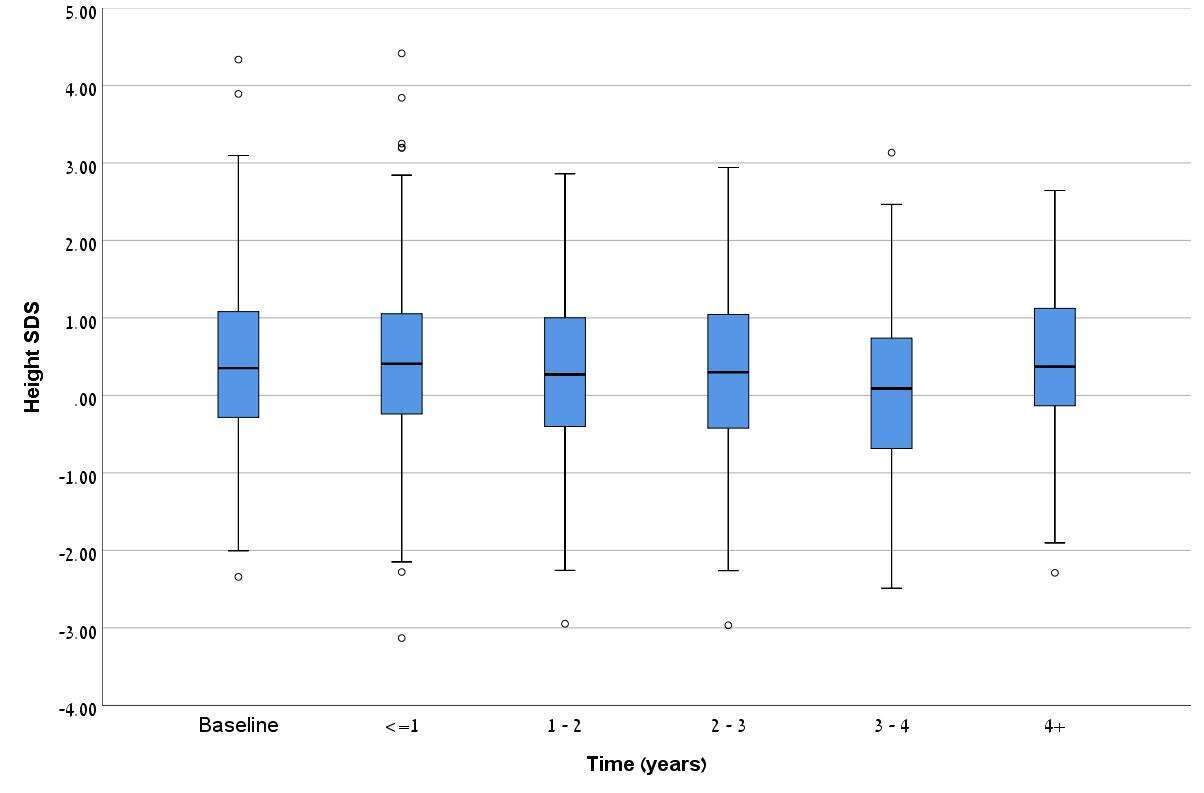Aim: There is a significant concern that competitive sports in children and adolescents might hinder growth. Available data are limited and conflicting. The study aim was to examine body height trajectories in competitive pediatric athletes.
Methods: Data on all child and adolescent athletes that underwent annual pre-participation examinations in a sports medicine center from 2007-2018 were extracted. Height was transformed to age- and sex- specific standard deviation scores (SDS). Generalized estimating equations were used for repeated measures analyses of height SDS changes over time.
Results: Data on 2,287 athletes were available; 693 had >1 height measurement and formed the study population (70.4% males, mean age 11.5±2.4 years, range 6-18, from 46 sport types). The median duration between the first and last examinations was 1.9 years (IQR 0.99-2.93 years) with a maximum of 9.3 years. Height SDS was not significantly changed throughout the follow-up period in the total cohort (-0.13 per year, 95%CI -0.52-0.03, p=0.51, Figure). In subgroup analyses, no significant change in height SDS was seen among athletes in height-advantageous sports (basketball, volleyball, tennis and swimming, p=0.73), basketball players (p=0.84) or gymnasts (p=0.24), nor when participants were stratified by first measurement age (<9, 9-12, 12+ years) and sex.
Conclusion: In this large cohort of pediatric athletes with repeated examinations, competitive sports were not associated with significant changes in body height relative to age. This finding remained true regardless of sport type, age at first measurement and sex. Competitive sports do not seem to hinder growth in children.


